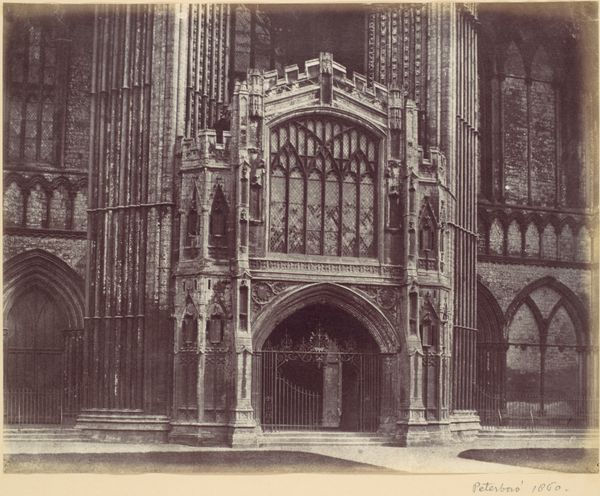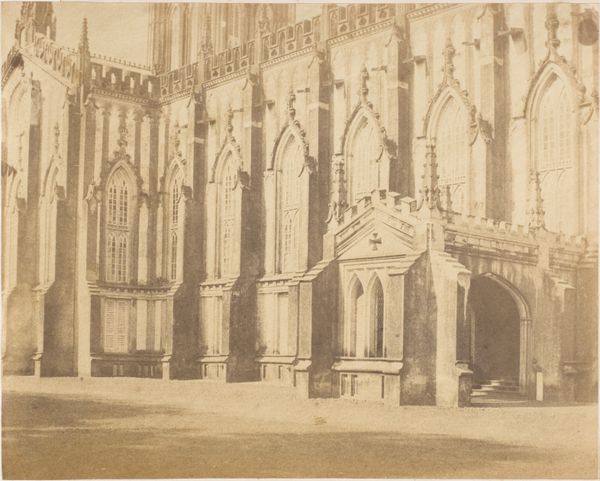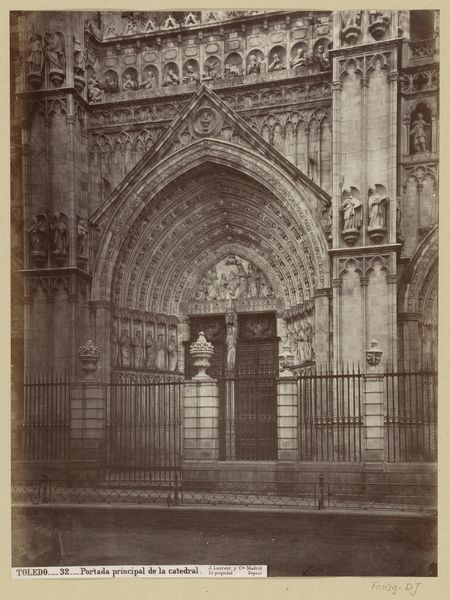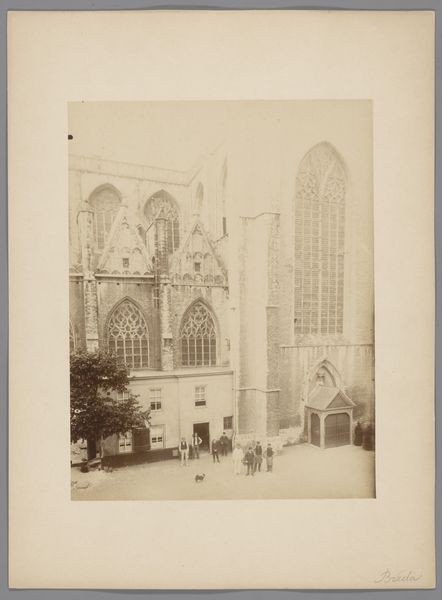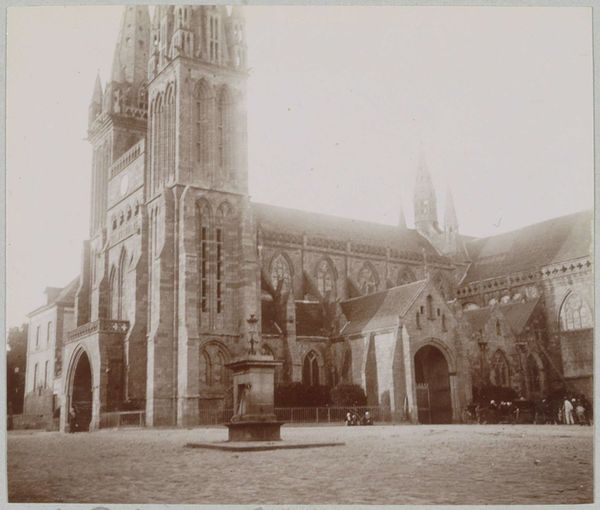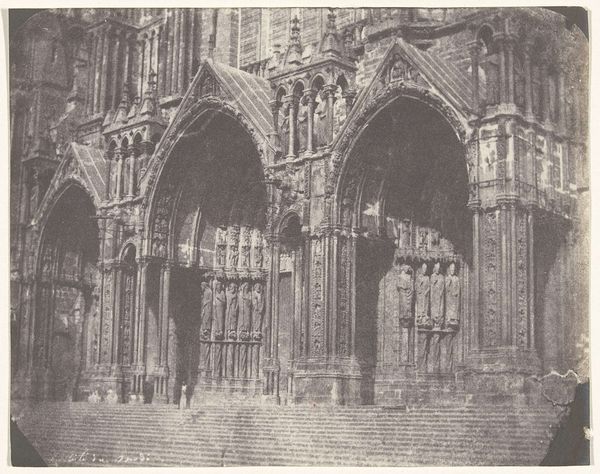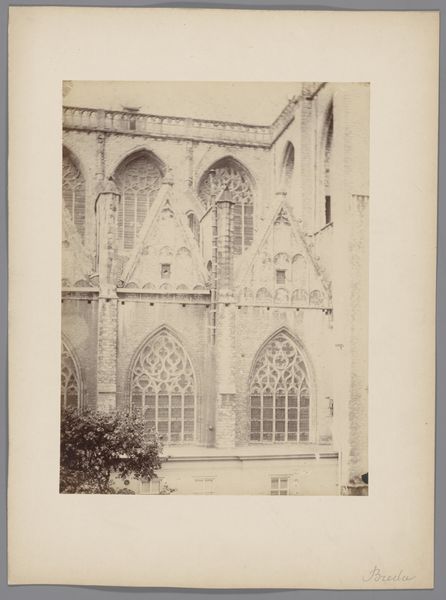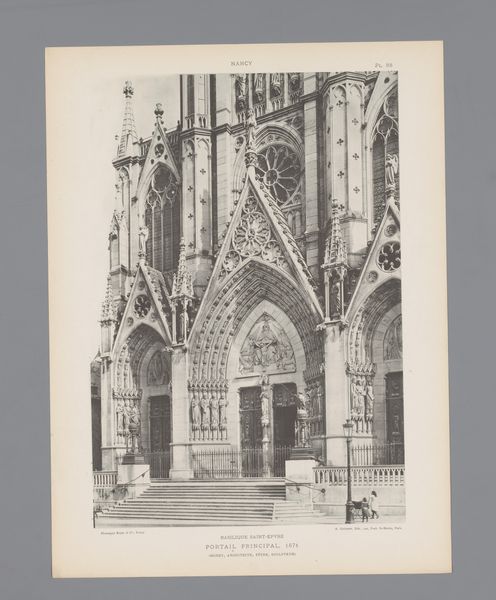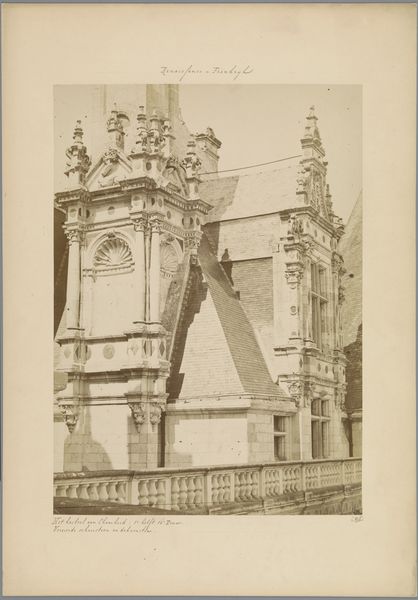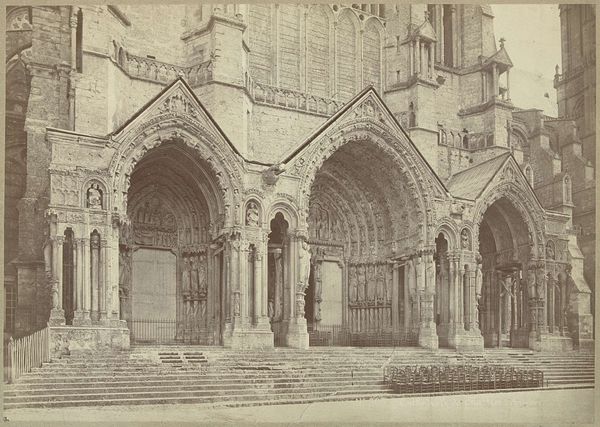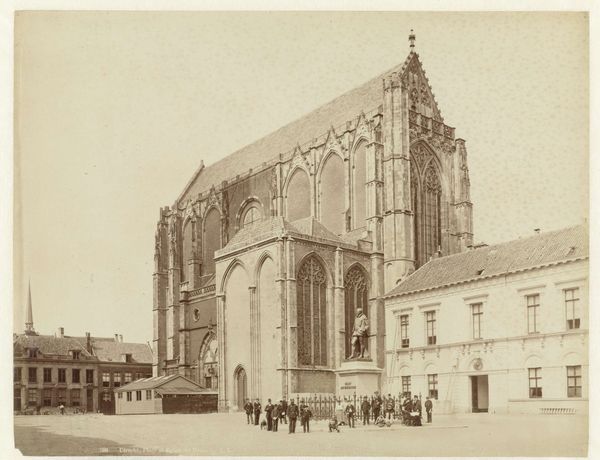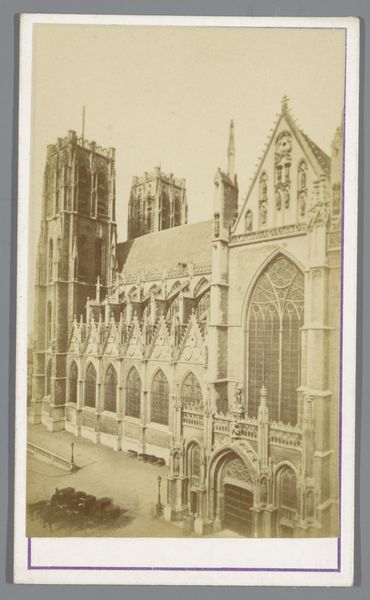![Untitled [South Façade of the Transept of St Michael’s and St Gudula Cathedral in Brussels, Belgium] by Bisson Frères](/_next/image?url=https%3A%2F%2Fd2w8kbdekdi1gv.cloudfront.net%2FeyJidWNrZXQiOiAiYXJ0ZXJhLWltYWdlcy1idWNrZXQiLCAia2V5IjogImFydHdvcmtzLzY5N2VmZWY3LWI0YWYtNDA4Yi05YTk0LTkwYWIzZjgwMDM3OS82OTdlZmVmNy1iNGFmLTQwOGItOWE5NC05MGFiM2Y4MDAzNzlfZnVsbC5qcGciLCAiZWRpdHMiOiB7InJlc2l6ZSI6IHsid2lkdGgiOiAxOTIwLCAiaGVpZ2h0IjogMTkyMCwgImZpdCI6ICJpbnNpZGUifX19&w=3840&q=75)
Untitled [South Façade of the Transept of St Michael’s and St Gudula Cathedral in Brussels, Belgium] Possibly 1854 - 1855
0:00
0:00
silver, print, photography, site-specific, architecture
#
16_19th-century
#
medieval
#
silver
# print
#
photography
#
arch
#
site-specific
#
19th century
#
architecture
Dimensions: 36.3 × 45.8 cm (image/paper); 51.1 × 69.2 cm (mount)
Copyright: Public Domain
Editor: This silver print, "Untitled [South Façade of the Transept of St Michael’s and St Gudula Cathedral in Brussels, Belgium]" possibly from 1854-1855 by Bisson Frères, showcases incredible detail. It feels very formal and imposing. What’s your perspective on this piece? Curator: It’s a potent image, isn’t it? The Bisson brothers, pioneers of architectural photography, weren’t simply documenting a building; they were capturing an ideology. Think about what cathedrals represented in 19th-century Europe: power, the church's dominance, and the control it exerted. Consider this image in dialogue with secular movements gaining momentum at the time, movements questioning authority. Does the seemingly straightforward composition hint at underlying tensions? Editor: So, the very act of documenting it becomes a statement in itself? How might class factor into this? Curator: Precisely. Photography, then emerging as a technology, democratized image production to some extent, challenging the elite’s control over representation. Though, who do you think was commissioning and viewing images like these at the time? The budding bourgeoisie perhaps seeking to emulate or even usurp aristocratic grandeur? Editor: I hadn't considered it that way. I was so focused on the cathedral itself. Now, I see it as part of a larger societal conversation. Curator: Exactly. The architecture speaks volumes, but the silences and what is implied through the photograph is just as compelling. Now think, how does reflecting on gender influence the reading of this cathedral space? How would feminist architectural theory unpack its function? Editor: That gives me a lot to think about in terms of power dynamics and whose voices were – and were not – included in the cathedral’s history. Thanks! Curator: A photograph like this reminds us that even seemingly objective documents can be tools for perpetuating or challenging established hierarchies.
Comments
No comments
Be the first to comment and join the conversation on the ultimate creative platform.
